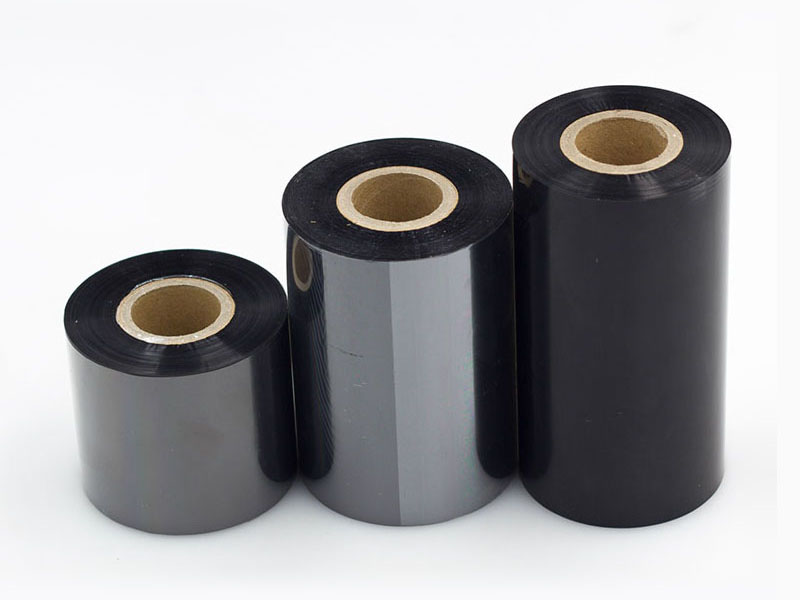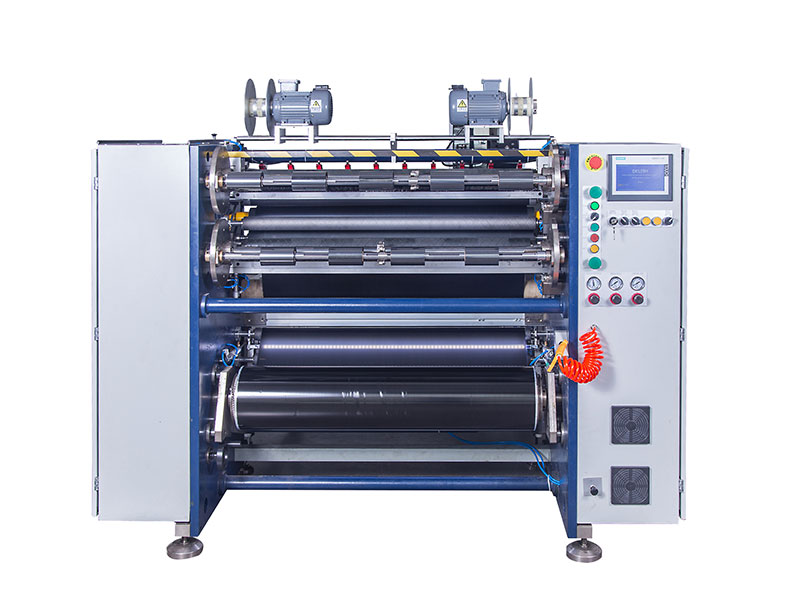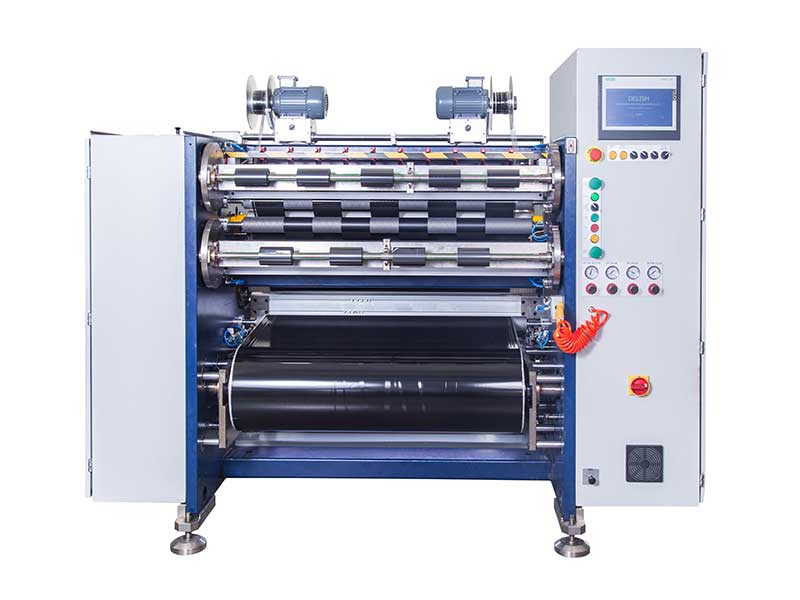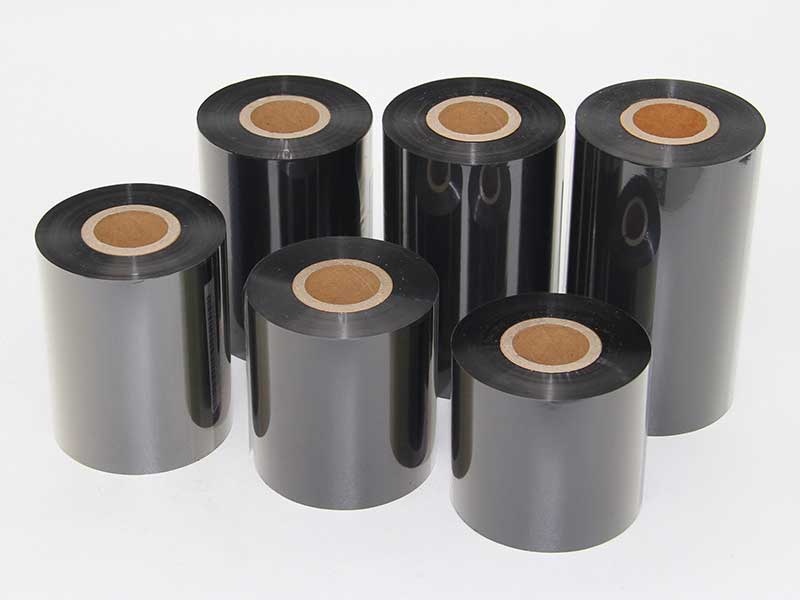As a key equipment in the production of ribbon (the core material of thermal transfer printing), the core technology of the ribbon slitting machine involves precision mechanical design, material science, automation control and other multidisciplinary disciplines. The following is the core technology analysis and process breakthrough direction of the whole process of the ribbon slitting machine from raw materials to finished products:
First, the raw material processing stage
1. Substrate pretreatment technology
◦ Polyester film (PET) or polyimide (PI) substrates need to be treated with a corona or applied with a sublayer to improve the adhesion of the subsequent carbon layer.
◦ Breaking point: Nanoscale coating technology (e.g., sol-gel method) can improve substrate surface uniformity and reduce edge burrs during slitting.
2. Carbon layer formulation and coating
◦ The rheological properties of wax-based/resin-based/mixed-based carbon pastes directly affect the slitting quality, and parameters such as viscosity and solid content need to be controlled.
◦ Process breakthrough: High-precision slot die coating technology to achieve a thickness error of ± 1μm and reduce thickness fluctuations during slitting.

Second, the core technology and structure of the slitting machine
1. High-precision slitting knife system
◦ Round knife slitting technology: using cemented carbide or diamond coated blades, the blade angle is accurate to 0.1°, and the service life is increased by 3 times.
◦ Laser slitting (emerging technology): non-contact cutting for ultra-thin ribbons (< 3 μm), there is no thermal damage at the edges, but the equipment cost is high.
◦ Breaking point: Adaptive tool wear compensation system that automatically adjusts pressure by monitoring the blade status in real time.
2. Tension control technology
◦ Multi-stage closed-loop tension control (unwinding→ traction → winding), using magnetic particle brake + servo motor + tension sensor linkage, fluctuation range < 0.5N。
◦ Innovative solution: AI-based predictive tension adjustment to predict the elastic deformation trend of materials in advance.
3. Web Guiding System (EPC)
◦ Infrared or CCD sensor detects the edge position and dynamically adjusts the guide roller with an accuracy of ± 0.1mm.
◦ Breakthrough: Machine learning algorithm optimizes the correction response speed and adapts to high-speed slitting (>300m/min).
4. Dust removal and static elimination
◦ The combination of ionic air bar + vacuum adsorption device prevents the accumulation of toner powder from affecting the slitting accuracy.
◦ New technology: low-temperature plasma dust removal, the efficiency is increased by 40%.

Third, process difficulties and breakthroughs
1. Ultra-narrow web slitting (< 1mm)
◦ Challenge: Blade vibration causes a serpentine transport.
◦ Solution: Air bearing support knife shaft, radial runout < 0.005mm。
2. Dust-free slitting environment
◦ Class 1000 design, with local laminar flow hood, to reduce particle pollution.
3. Winding uniformity control
◦ Constant linear speed + variable torque winding, with inflatable shaft precision clamping, end face uniformity < 0.2mm。

Fourth, intelligent and automated upgrading
1. Digital twin technology
◦ Virtual debugging of slitting parameters (such as tension and speed) to reduce the loss of physical test machine.
2. Visual quality inspection system
◦ On-line detection of slitting edge defects (such as burrs, serrations), and automatic sorting of defective products.
3. Energy optimization
◦ The regenerative braking system recovers the energy during slitting and deceleration, reducing energy consumption by 15%.
Fifth, the future direction of technology
• Flexible electronic grade slitting: adapt to the needs of ultra-thin ribbons for wearable devices.
• Quantum dot coating slitting: for the high-resolution color thermal transfer market.
• Modular design: Quickly switch between plug-and-play cutter sets with different widths (e.g. 1mm→10mm).
summary
The technical competition of ribbon slitting machine has shifted from pure mechanical accuracy to "material-equipment-algorithm" collaborative innovation. Future breakthroughs will focus on: (1) nanoscale surface treatment technology; (2) ultra-high-speed dynamic control algorithm; (3) Low-carbon manufacturing process. Companies need to establish technical barriers on core components (e.g., high-rigidity frames, intelligent tool magazines) and process databases (e.g., material-parameter matching models).
 Long-term reliability maintenance guide for ribbon slitting machines
Long-term reliability maintenance guide for ribbon slitting machines One-Click Operation: How the Convenience of Ribbon Slitting Machines Reshapes Workflows
One-Click Operation: How the Convenience of Ribbon Slitting Machines Reshapes Workflows Ribbon slitting machine: when precision meets user-friendly, the humanistic change of industrial design
Ribbon slitting machine: when precision meets user-friendly, the humanistic change of industrial design The Blade of Precision: How Ribbon Slitting Machines Become the Invisible Guardians of Print Quality
The Blade of Precision: How Ribbon Slitting Machines Become the Invisible Guardians of Print Quality Beyond Slicing: The Evolution of Ribbon Slitting Machines in the Productivity Revolution
Beyond Slicing: The Evolution of Ribbon Slitting Machines in the Productivity Revolution